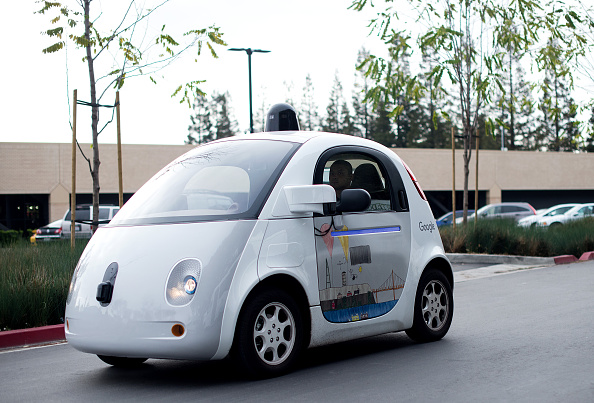
Transportation Secretary Anthony Foxx recently announced a $4 billion initiative meant to remove hurdles to the development of self-driving cars. One thing is now clear: this technology is no longer science fiction or speculation. Elon Musk, the head of Tesla, claims that fully autonomous cars will be market ready in as little as two years. Ford CEO Mark Fields has said that consumers will be occupying autonomous vehicles by 2020. Public discussion around future technologies will increasingly focus on autonomous vehicles, as the world catches up to the implications for the environment, our daily lives and the way our communities are organized.
While Google’s self-driving cars have become emblematic of the technology, the Internet giant is far from the only company to understand the stakes. General Motors recently invested $500 million in Lyft with a promise of a network of autonomous vehicles. Other manufacturers and technology companies from Germany to China to Japan are developing prototypes. For example, Toyota has invested $1 billion in an autonomous vehicle unit, and the Japanese government hopes to shuttle visitors in driverless cars during the 2020 Olympics. China’s Tencent and iPhone-maker Foxconn are partnering to build smart electric vehicles—without an automaker involved.
As President Obama and Secretary Foxx have made clear, this is a chance for the U.S. to lead another era of global innovation. However, the opportunity could easily skip America. The problem: we will need to unravel decades of policy and regulations written for cars in their current form. Other countries have even greater incentives to develop and deploy driverless cars. For example, less developed nations like India and countries in Africa may be able to leapfrog car ownership completely. China, which gained 17 million new cars in 2014, will have an opportunity to solve pollution and congestion problems. Ironically, though the U.S. should stand in a good position to shape this future, we will need to work even harder to do so.
The private sector, as demonstrated in numerous technologies, has the power to make this happen. The technology will develop, but actually delivering autonomous vehicles to consumers will require a thoughtful, adaptable policy framework. This will be particularly necessary in order to realize the true promise of autonomous vehicles—cities with less pollution, less traffic, and greater safety and prosperity. Achieving this does not mean regulating simply to satisfy the urge to regulate—as we’ve seen time and again, few policies can keep up with the speed of technological development.
Instead, as the Department of Transportation works in the coming year to develop a “model” for state regulation on autonomous vehicles, we need to bring together private, public, and civil society stakeholders to guide the policymaking process on the broad range of public interests, beyond simply safety. Any such conversation should be based on the following principles:
1. The environmental impact of driverless cars should be positive, or at least be neutral. The effect of any increase in vehicle miles traveled (VMT) from changes in behavior should be offset by incentives for low-carbon fuel sources in these vehicles.
2. Autonomous technologies in cars should increase affordability and create value for people who otherwise are underserved by transit alternatives. Our goal must be to reduce the cost per mile driven, while increasing convenience, benefitting all.
3. Any policy should be a way to reduce how much we spend on transportation infrastructure. All levels of government in the United States spent $416 billion on public infrastructure in 2014. Shared autonomous vehicles can help us get more out of existing infrastructure by increasing our roads’ carrying capacity.
4. Driverless cars should make our communities safer. About 30,000 Americans die annually in accidents involving automobiles, the vast majority of these caused by driver error. Research suggests that autonomous vehicles will improve safety for the occupant of the car, as well as everyone on our roadways. The impact is even more profound abroad.
5. Driverless cars must reward us with two things that Americans value: their time and their property. Americans collectively spent 6.9 billion hours stuck in rush-hour traffic in 2014. Driverless cars and new forms of sharing could alleviate this congestion, and the resulting time suck. Using cars more efficiently will enable us to regain prime real estate, with parking lots currently covering as much a third of the land in urban areas.
As policymakers across America evaluate requests to enable autonomous technology or implement pilot programs, we need to create a broad and engaged public conversation that accounts for its potential public benefits. That conversation should be based on the principles of improving emissions, affordability, lower public spending, greater safety, and consumer benefits. With a shared vision for the future of transport, our country can stay at the forefront of one of the greatest opportunities of the 21st century.
More Must-Reads from TIME
- Why Trump’s Message Worked on Latino Men
- What Trump’s Win Could Mean for Housing
- The 100 Must-Read Books of 2024
- Sleep Doctors Share the 1 Tip That’s Changed Their Lives
- Column: Let’s Bring Back Romance
- What It’s Like to Have Long COVID As a Kid
- FX’s Say Nothing Is the Must-Watch Political Thriller of 2024
- Merle Bombardieri Is Helping People Make the Baby Decision
Contact us at letters@time.com